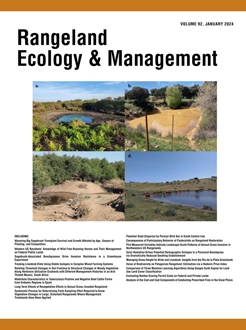Success in conserving biodiversity in rangelands depends on effectively managing the systems to achieve positive economic outcomes while preserving biodiversity. In the native grasslands of the Río de la Plata region, livestock production often falls below its potential due to low forage availability. Cattle management strategies that promote taller grass height can increase forage mass without replacing native vegetation, enhancing cattle dry matter intake and potentially boosting production. Nonetheless, the impact of such changes on grassland bird populations remains unclear. In this study, we implemented management changes to increase grass height across six ranches and evaluated the responses of grassland bird specialists. Initially, the average grass height was 6 cm, but after the management changes, it increased to an average of 12 cm. This also increased grass heterogeneity, which is desirable for supporting a higher richness of grassland birds. We found that both the abundances of individual grassland bird species and richness did not vary after the management changes. Moreover, threatened grassland bird species that rely strictly on taller grasses did not colonize the paddocks following the alterations. Therefore, we conclude that maintaining the abundance of seven grassland bird specialists and potentially increasing livestock production is feasible, as the attained grass height coincided with levels known to maximize cattle dry matter intake rate. However, achieved average grass height was not sufficiently tall to support endangered tall grass specialists. It is possible that longer time frames allow tussocks to grow taller and provide such habitat conditions. Most previous research on rangelands biodiversity has focused on assessing faunal responses in either ungrazed or heavily grazed areas. Therefore, our findings contribute to a better understanding of faunal responses within this spectrum and align with a win-win production-conservation approach, which can aid in safeguarding biodiversity across large geographic scales.
How to translate text using browser tools
23 January 2024
Managing Grass Height for Birds and Livestock: Insights from the Río de la Plata Grasslands
Joaquín Aldabe,
Ana Inés Sánchez-Iriarte,
Mercedes Rivas,
Oscar Blumetto
ACCESS THE FULL ARTICLE
Biodiversity conservation
ecology
grassland bird populations
livestock production
rangeland management





